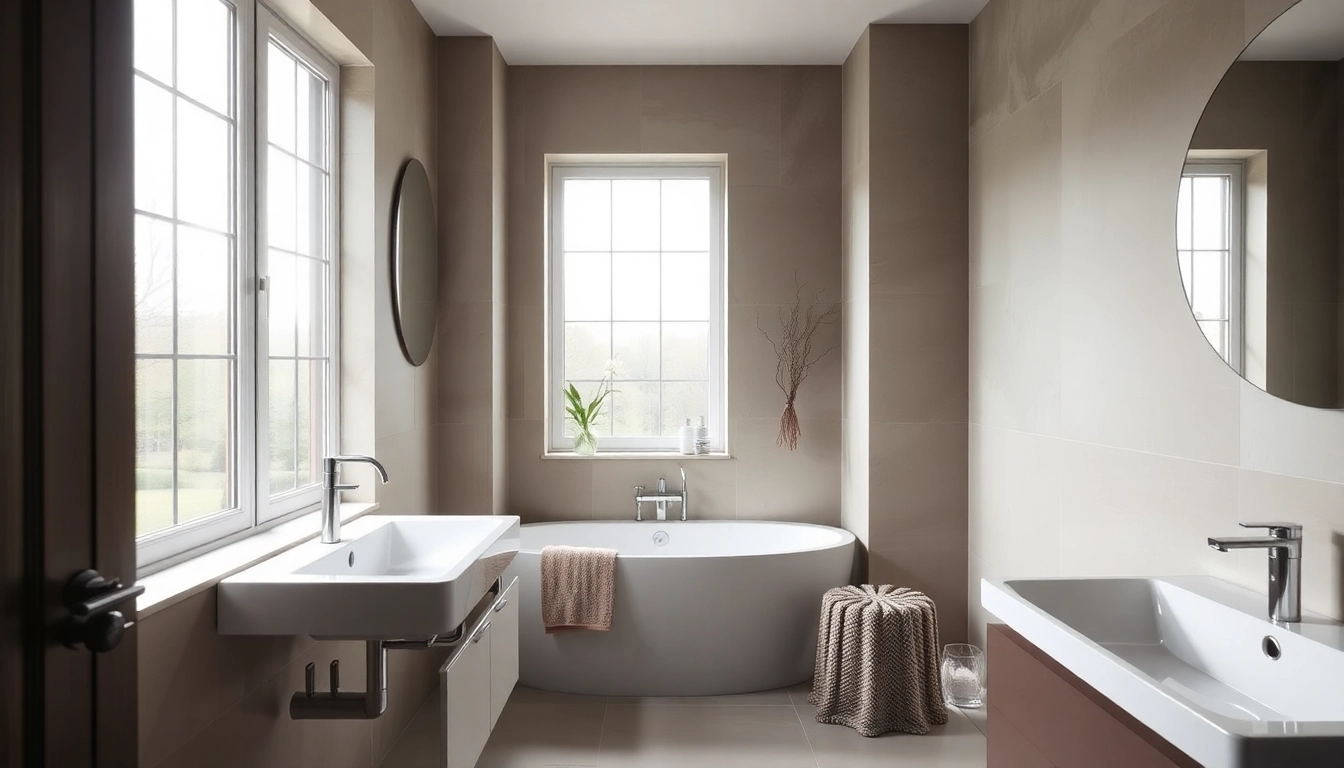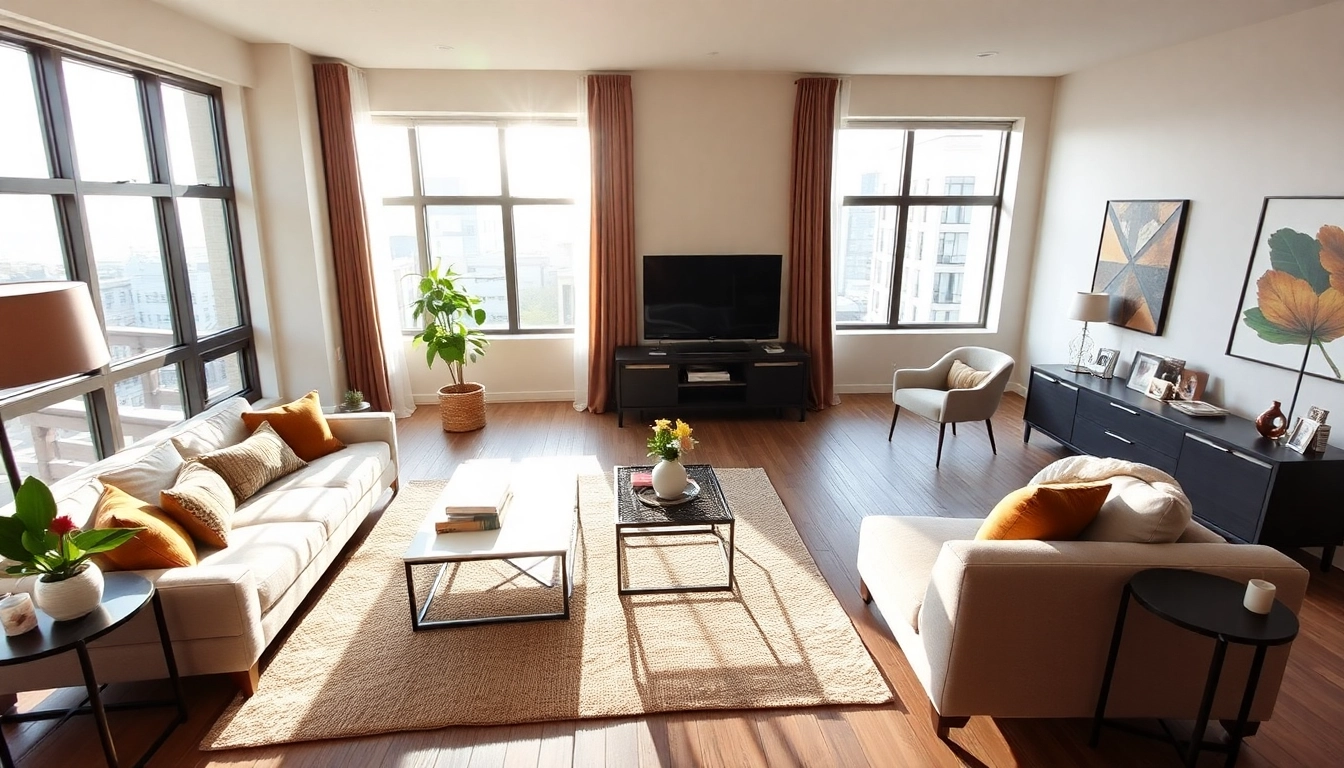Understanding Wandbegrünung Indoor
Definition of Indoor Vertical Gardens
Wandbegrünung, or vertical gardening, involves the use of wall-mounted systems to grow plants indoors. These systems can consist of various types of plants, including ferns, succulents, and flowering species, arranged in a way that maximizes vertical space. Unlike traditional gardening, which spreads out horizontally, Wandbegrünung Indoor takes advantage of vertical surfaces, making it an excellent choice for urban dwellers or anyone with limited floor space. This innovative approach not only beautifies indoor environments but also brings numerous ecological benefits, such as improved air quality and enhanced humidity levels.
Benefits of Wandbegrünung for Indoor Spaces
The benefits of indoor vertical gardens extend far beyond aesthetics. Here are some key advantages:
- Air Quality Improvement: Plants naturally filter indoor air pollutants. They absorb carbon dioxide and release oxygen, making the environment healthier.
- Humidity Regulation: The process of transpiration leads to increased humidity levels, which can alleviate dry indoor air, particularly in winter months.
- Temperature Control: Vertical gardens can help insulate buildings by maintaining a more stable temperature.
- Noise Reduction: Plant walls can dampen sound, making them an excellent choice for reducing noise pollution in busy urban settings.
- Aesthetic Appeal: Living walls create stunning focal points in any room, enhancing decor while promoting mental well-being through biophilic design.
Common Misconceptions
Despite the numerous advantages of vertical gardens, several misconceptions can deter individuals from adopting them. One common myth is that all indoor plants require continuous exposure to sunlight, which is not necessarily true. Many plants thrive in low-light conditions, making them ideal for indoor settings.
Another misconception is that maintenance and care for a vertical garden are overly complex, which can deter potential enthusiasts. While proper care is vital, with the right choice of plants and a manageable watering schedule, maintaining a living wall can be quite straightforward.
Choosing the Right Plants for Your Wandbegrünung Indoor
Best Plant Varieties for Vertical Gardens
Selecting the right plants is crucial for a successful indoor vertical garden. Here are some of the best plant varieties suitable for these setups:
- Ferns: Different types of ferns, such as Boston or maidenhair ferns, thrive well in shaded environments and offer a lush appearance.
- Succulents: These plants require minimal watering and can add a modern touch to your vertical garden.
- Philodendrons: Known for their heart-shaped leaves, these are hardy indoor plants that do well in filtered light.
- Pothos: A resilient and adaptable plant, pothos can grow in a range of lighting conditions and are known for their vibrant foliage.
- Peace Lily: This site also helps with air purification and uses lower light effectively.
Considerations for Light and Humidity Needs
When choosing plants for your vertical garden, it’s essential to consider the specific light and humidity requirements of each species. Most indoor plants prefer indirect sunlight and thrive in moderate to high humidity. It is advisable to formulate a watering schedule, taking into account the natural moisture levels in the room.
Additionally, if your indoor environment is particularly dry (common in winter months due to heating systems), you might want to include moisture-retaining materials, such as coconut coir or moss, in your vertical garden design.
Maintaining Plant Health in Indoors
Regular maintenance is key to ensuring the health of your indoor vertical garden. Here are a few tips:
- Monitor moisture levels carefully, as overwatering can lead to root rot.
- Fertilize your plants using a balanced indoor plant fertilizer every few weeks during the growing season.
- Inspect plants regularly for pests, such as spider mites or aphids. Early detection can prevent larger infestations.
- Rotate plants periodically to ensure even growth and exposure to light.
Installation Techniques for Wandbegrünung Indoor
Step-by-Step Guide to Setting Up
Setting up your indoor vertical garden can be an exciting project. Here’s a simple step-by-step guide:
- Choose Your Location: Select a wall with adequate light and accessibility for maintenance.
- Select Your Planting System: Options range from modular systems to DIY setups using pocket planters or trellises.
- Prepare the Wall: Ensure that the wall is clean and can handle the weight of plants and soil.
- Add the Growing Medium: Fill the planter systems with a quality potting mix suited for your plant varieties.
- Arrange Your Plants: Begin planting from the bottom up, as taller plants should be placed higher to ensure proper light access.
- Water Thoroughly: After planting, water thoroughly until you see drainage.
- Implement a Drip System (if necessary): For more extensive installations, consider setting up a drip irrigation system for automated watering.
Choosing the Correct Structure and Materials
The success of an indoor vertical garden heavily depends on the structures and materials used. Select materials that are durable and resistant to moisture, such as:
- Metal Frames: Strong and long-lasting, metal frames provide a sturdy structure for climbing plants.
- Wood Panels: Properly treated wood can give a warm aesthetic to your living wall but ensure it is resistant to rot.
- Plastic Planters: Lightweight and easy to install, modular plastic planters are ideal for any indoor setting.
Common Challenges and Solutions during Installation
When installing your vertical garden, be prepared to face challenges such as:
- Weight Distribution: Ensure the wall is capable of handling the weight of the plants and soil. If necessary, reinforce the structure.
- Pest Control: Choose plants that are less susceptible to pests and implement preventive measures like regularly changing the water and using organic insecticides.
- Light Limitations: If natural light is insufficient, consider using grow lights to supplement light for the plants.
Design Ideas for Effective Wandbegrünung Indoor
Incorporating Design Aesthetics
Incorporating vertical gardens into your interior design showcases creativity. Here are some trending aesthetics:
- Color Coordination: Choose plants that complement the existing color theme of your room.
- Textures Variety: Mix different plant textures; pairing robust leafy plants with delicate flowers can create visual interest.
- Framing: Use frames around your vertical garden to differentiate it from the wall and draw attention to its beauty.
Space Optimization with Vertical Gardens
Vertical gardens are a brilliant way to optimize space, particularly in smaller living areas. To maximize floor space:
- Utilize Unused Walls: Any empty wall can become a vertical garden, freeing up floor space for other furnishings.
- Layering Plants: Create a tiered planting system to maximize plant growth on the wall.
Enhancing Room Ambiance and Aesthetics
A living wall not only serves as decoration but also enhances the ambiance of your space. Consider:
- Lighting Effects: Use strategically placed LED lights to create a beautiful light effect on your plant wall.
- Garden Features: Add decorative elements such as pebbles or water features for a more serene and calming atmosphere.
Maintaining Your Wandbegrünung Indoor
Watering and Nutritional Needs
Watering and fertilization are critical components of plant maintenance. A well-designed indoor garden should:
- Include a consistent watering schedule, observing the specific needs of each plant variety.
- Use organic fertilizers to provide essential nutrients while avoiding chemical residues.
Regular Care and Maintenance Checklist
To maintain a thriving indoor vertical garden, consider setting a regular maintenance checklist that includes:
- Weekly inspections for pests and diseases.
- Monthly scheduling for pruning to promote healthy growth.
- Routine cleaning of the wall and containers to prevent mold buildup.
Long-term Care Tips for Sustainable Growth
For sustainable growth of your vertical garden, keep in mind:
- Rotate plants periodically to ensure even light exposure and growth.
- Ensure drainage systems are in place to prevent excess soil moisture, which can damage roots.
- Consider seasonal changes in light and humidity, adjusting your watering schedule accordingly.


